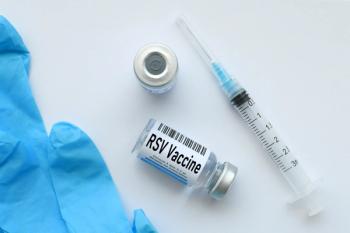
Toxicity Not Increased By Hypofractionated Post-Operative Prostate Bed Radiotherapy For Patients With Prostate Cancer
However, the trial failed to demonstrate that dose-escalated radiation therapy (RT) was superior to conventional RT.
Hypofractionated post-operative prostate bed radiotherapy (HYPORT) did not result in increased patient-reported genitourinary (GU) or gastrointestinal (GI) toxicity compared to conventional post-prostatectomy radiotherapy (COPORT), according to a study presented at the Plenary Session of the American Society for Radiation Oncology’s Annual Meeting. However, the trial failed to demonstrate that dose-escalated radiation therapy (RT) was superior to conventional RT.
“Radiotherapy is a curative treatment alternative to surgery for men with prostate cancer and short courses are used all the time,” said Mark Buyyounouski, MD, in a press release. “Radiotherapy may also be indicated after surgery, but a short course has not been tested. NRG-GU003 is the first trial comparing a short course to a well-established practice standard of 7 weeks. After two years, patients reported no increase in urinary or bowel side effects with the shorter course and its effectiveness was comparable.”
The study randomized 296 men into 2 cohorts—1 receiving HYPORT and the other receiving COPORT. The HYPORT dosage was 62.5 Gy to the prostate bed in 25 fractions of 2.5 Gy, compared to the COPORT dosage of 66.6 Gy in 37 fractions of 1.8 Gy. The investigators then used Expanded Prostate Cancer Index Composite (EPIC) scoring to determine inferiority or non-inferiority during a 2-year follow up post-treatment.
“Radiotherapy is a highly effective treatment after surgery if an elevated [prostate-specific antigen] indicates recurrence of disease,” Buyyounouski said in the release. “However, a small minority of men receive treatment. We hope these results will better allow patients access to treatment and ultimately reduce the burden of prostate cancer because a safe and shorter treatment is available.”
According to the investigators, compliance with EPIC was 100% at baseline, 83% at the end of radiotherapy, 77% at 6 months, 78% at 12 months, and 73% at 24 months. The differences between mean GU change scores for HYPORT and COPORT were not clinically nor statistically significant at the end of radiotherapy, and they remained this way 6 and 12 months following treatment.
Mean GI change scores were both clinically significant and statistically significantly different at the end of radiotherapy, but this was resolved by the 6- and 12-month follow-ups.
REFERENCE
Hypofractionated post-operative prostate bed radiotherapy does not increase patient-reported toxicity for men with prostate cancer [news release]. EurekAlert; October 25, 2021. Accessed October 27, 2021.
Newsletter
Stay informed on drug updates, treatment guidelines, and pharmacy practice trends—subscribe to Pharmacy Times for weekly clinical insights.







































































































































































































